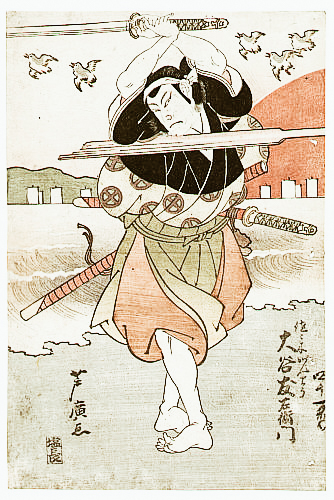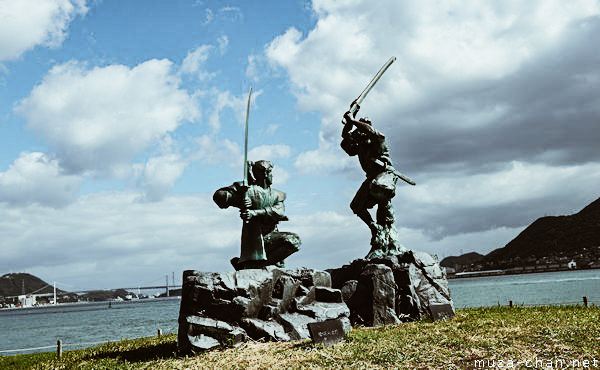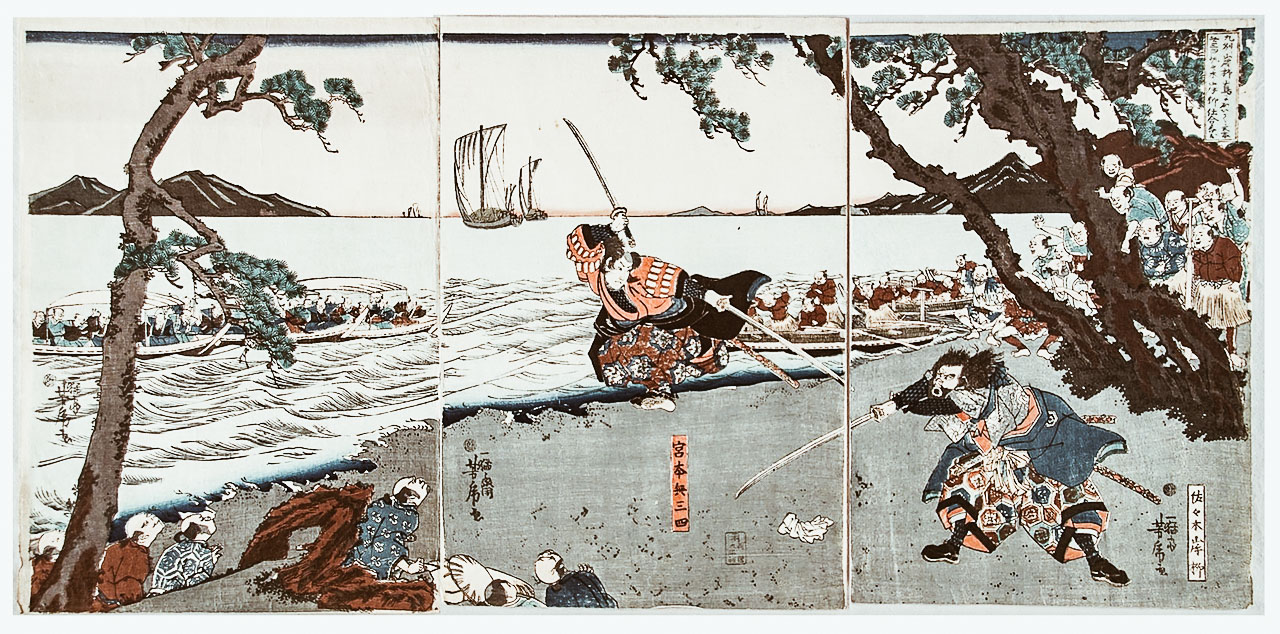Japan History: Sasaki Kojirō
Sasaki Kojirō (1583 circa – 13 aprile 1612) nacque in un villaggio della provincia di Echizen. Noto come Sasaki Ganryū, è stato un importante spadaccino giapponese, principalmente ricordato per essere stato ucciso nel corso di un duello con Miyamoto Musashi. Sasaki Kojirō viene ricordato anche per indossare un haori di colore rosso e visse fra l’era Sengoku e l’inizio del periodo Edo.

photo credits: wikipedia.org
La sua vita
Vissuto a cavallo dell’epoca Sengoku e l’inizio del periodo Edo, da ragazzo incontra Toda Seigen, istruttore di arti marziali del clan Asakura, divenendo suo allievo. Questo tipo di addestramento lo porta lontano dallo stile di Seigen, avvicinandosi al il kodachi, e sviluppando una tecnica che fa uso di ōdachi denominata Ganryū (“Stile della Roccia”). Grazie alla sua katana chiamata Monohoshi Zao, sviluppa la tecnica Tsubame-Gaeshi ( “Contrattacco della Rondine”), ispirata al volo dell’uccello.
Nel 1610 apre un dojo a Kokura e la sua fama inizia ad attrarre numerosi studenti di arti marziali, tra i quali troviamo Miyamoto Musashi, uno spadaccino ventinovenne che nell’aprile del 1612 lo sfida ad un duello che diventa protagonista di molte leggende. Le versioni descrittive delle leggende riguardanti il duello tra Sasaki Kojirō e Miyamoto Musashi sono varie e differiscono molto per quanto riguarda i dettagli. Su una cosa le leggende sono tutte d’accordo ed è la fine del duello che vede Musashi come vincitore.
Il duello finale
Il duello avvenne il il 13 aprile 1612 su un’isola a pochi chilometri da Kokura. Prima di giungere nel luogo, Musashi costruì un bokken con un remo e si presentò con ben tre ore di ritardo, ovvero tra le 9 e le 11. Kojirō estrasse la sua spada arrabbiandosi molto con Musashi a causa del suo ritardo e lanciò il fodero nell’ acqua. Musashi uccise Kojirō con un colpo alla testa assestato dalla sua spada di legno. Avvenne tutto così’ velocemente senza lasciare il tempo a Kojirō di usare la sua tecnica.

photo credits: muza-chan.net
Le ipotesi della morte di Sasaki Kojirō
Le ipotesi riguardanti la vittoria di Miyamoto Musashi sono tante, tra cui si pensa anche che il ritardo fosse premeditato proprio per innervosire l’avversario. Durante le tre ore di ritardo infatti, Musashi si riposò mentre Kojirō perdeva completamente la concentrazione. In aggiunta, il suo abbigliamento non curato e la spada di legno contribuirono a fare arrabbiare Kojirō ancora di più. Si può dire che Musashi abbia vinto giocando sulla psicologia dell’avversario.
Un’altra ipotesi vede Musashi protrarre il ritardo appositamente per sfruttare l’effetto della luce solare tanto che potesse accecare l’avversario, un’altra ancora lo vede approfittare della bassa marea che gli avrebbe permesso di scappare più facilmente.

photo credits: wikipedia.org
Kojirō era (probabilmente) sordo da un orecchio, ma questo non ha mai contribuito alla sua perdita, nonostante tutto sembra che questo sia accaduto perchè Musashi sfruttò la maggior lunghezza del suo bokken rispetto alla spada del suo avversario.
L’isola che fu luogo del duello venne ribattezzata Ganryū-jima in onore di Sasaki Kojirō.
Condividi:
- Fai clic per condividere su Facebook (Si apre in una nuova finestra)
- Fai clic qui per condividere su Twitter (Si apre in una nuova finestra)
- Fai clic qui per condividere su Tumblr (Si apre in una nuova finestra)
- Fai clic qui per condividere su Pinterest (Si apre in una nuova finestra)
- Fai clic per condividere su Telegram (Si apre in una nuova finestra)
- Fai clic per condividere su WhatsApp (Si apre in una nuova finestra)
- Fai clic qui per condividere su Reddit (Si apre in una nuova finestra)
- Fai clic qui per stampare (Si apre in una nuova finestra)






